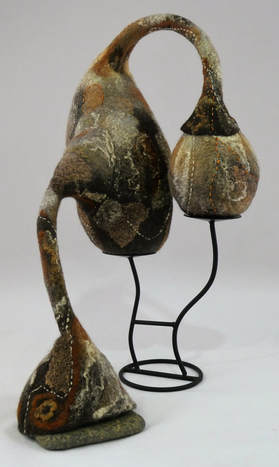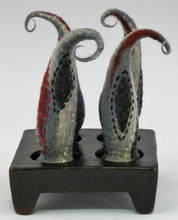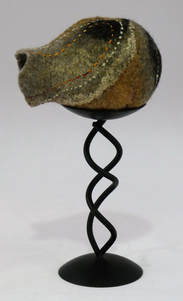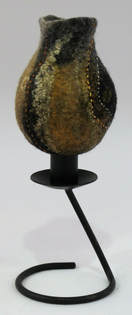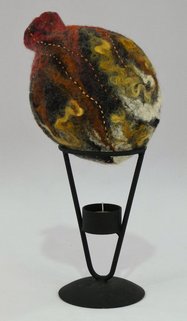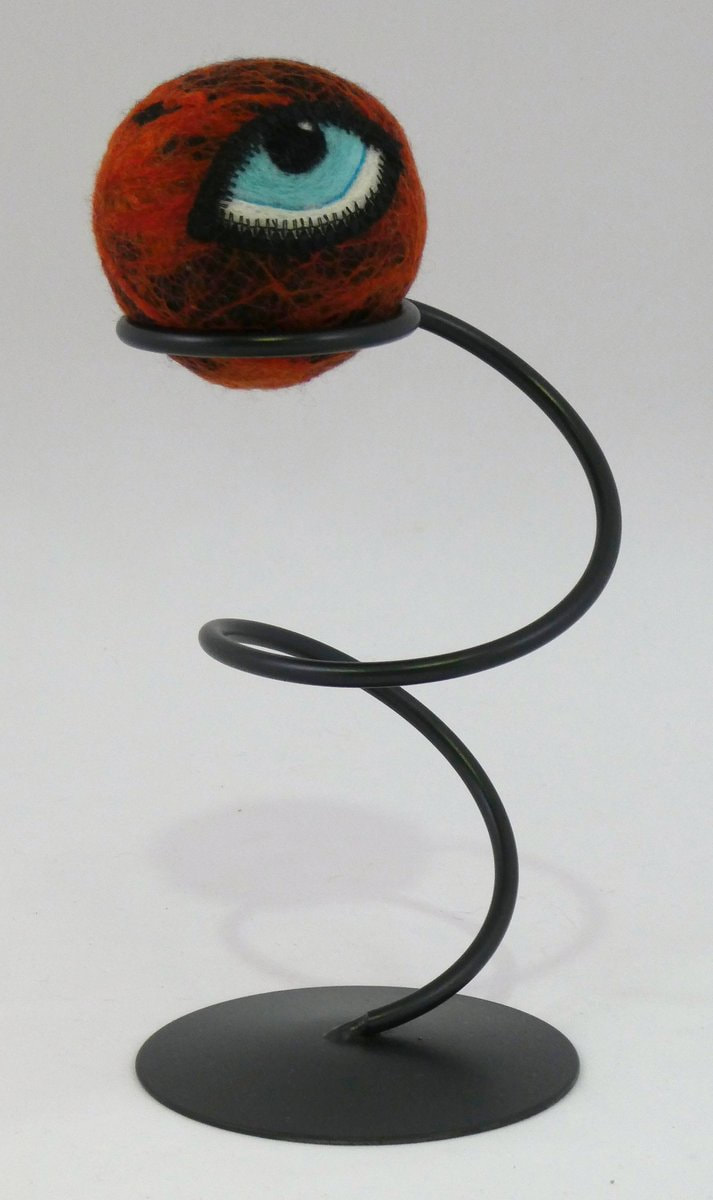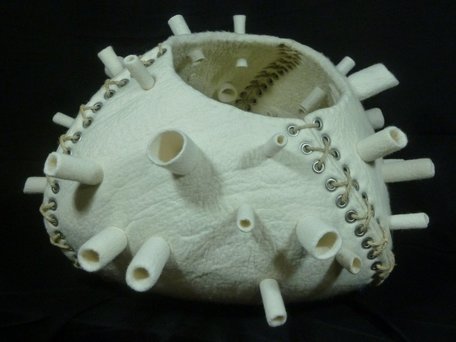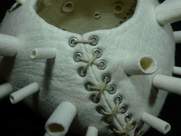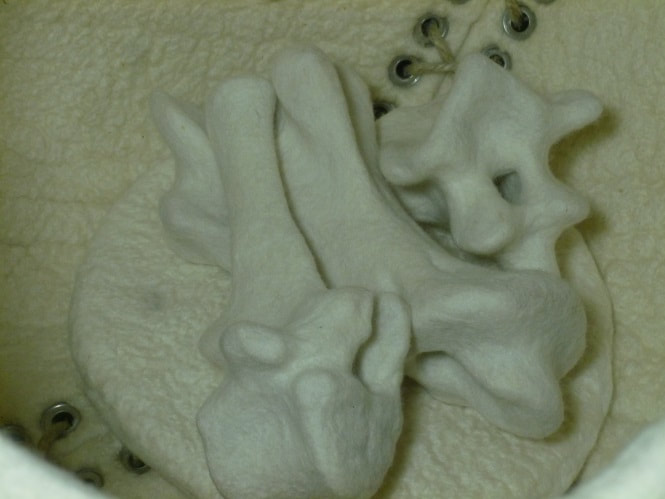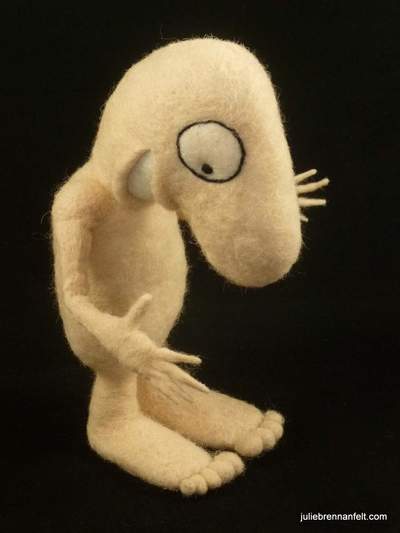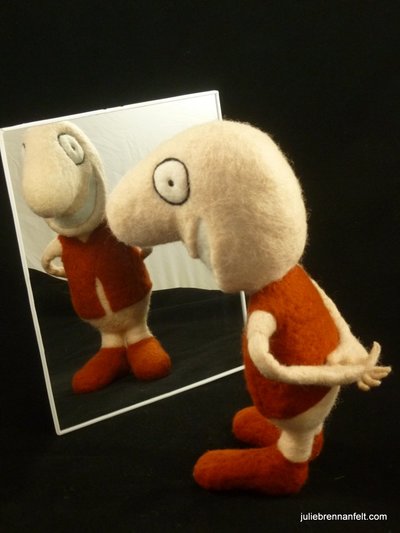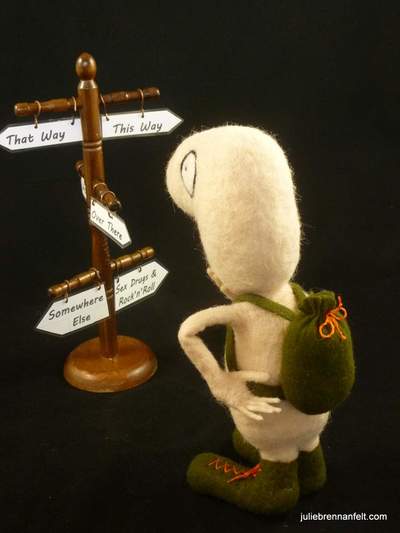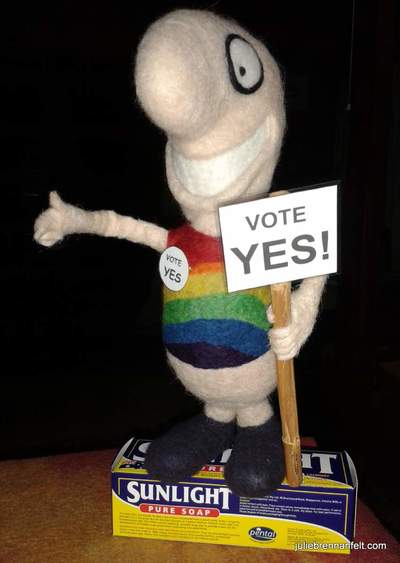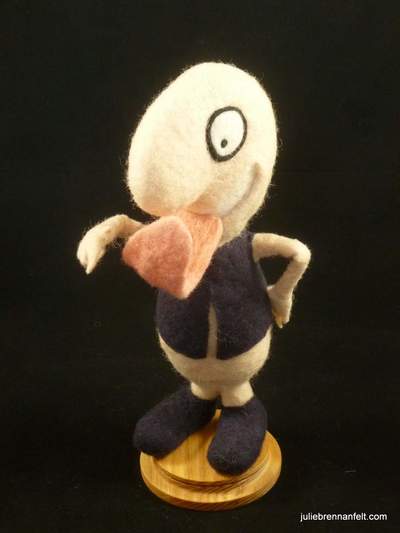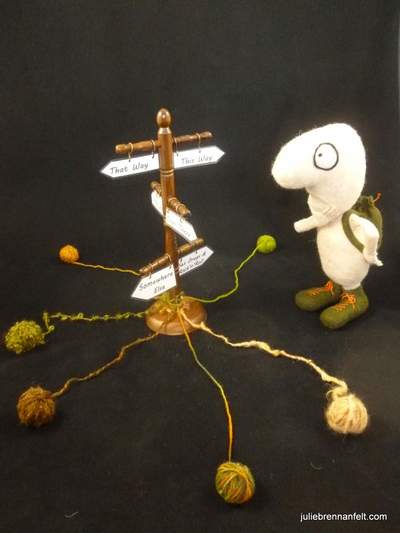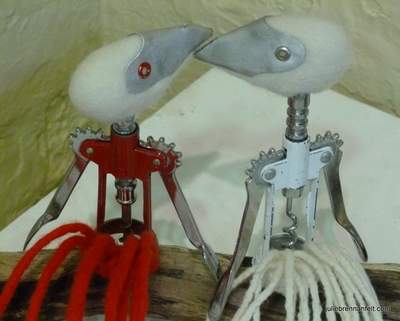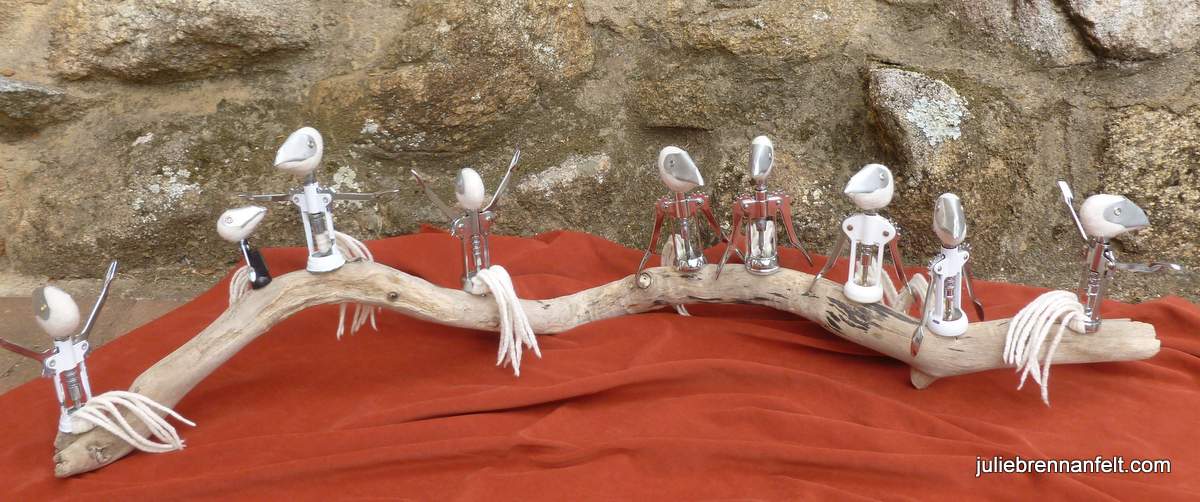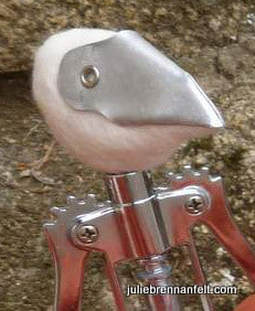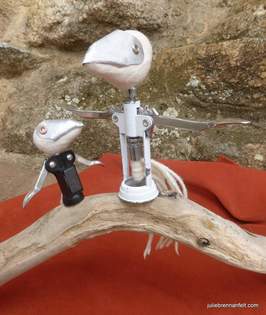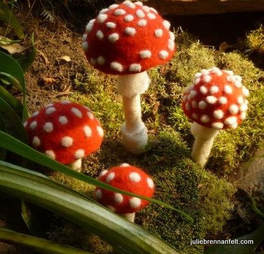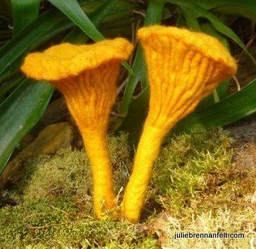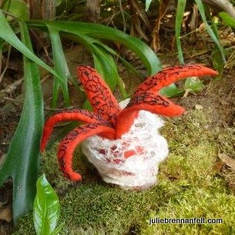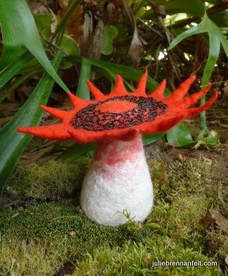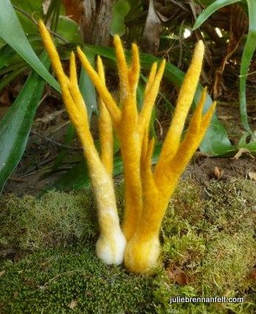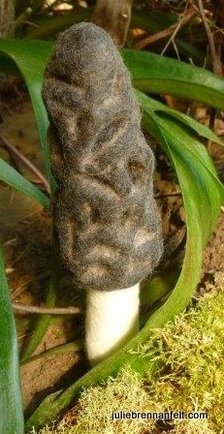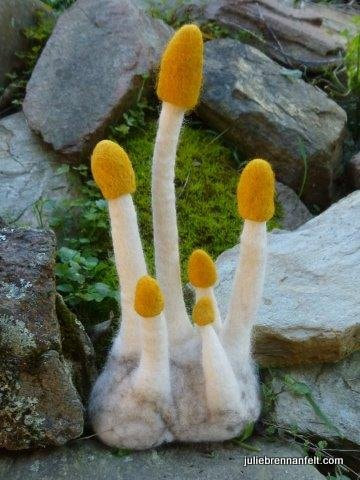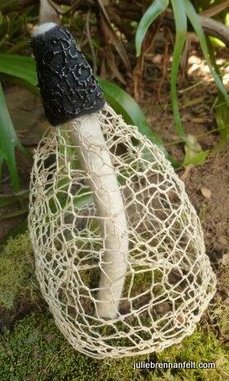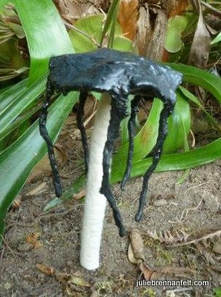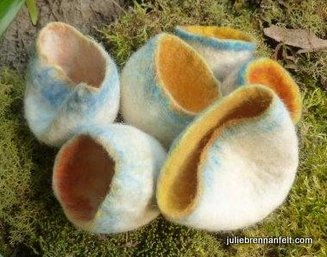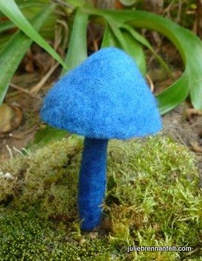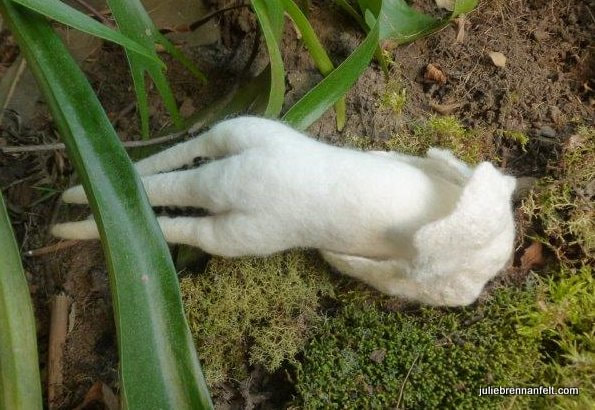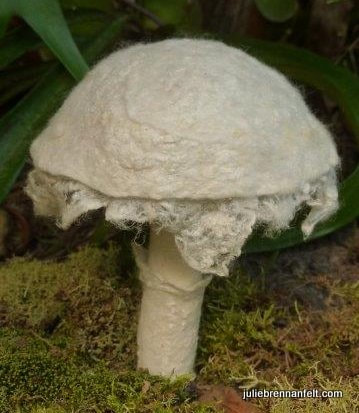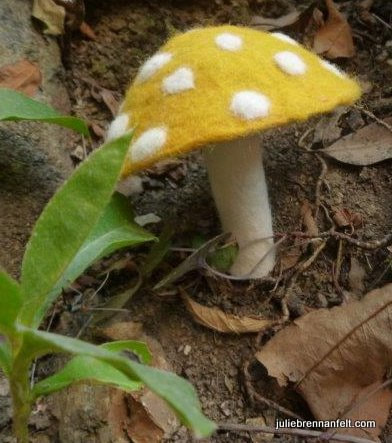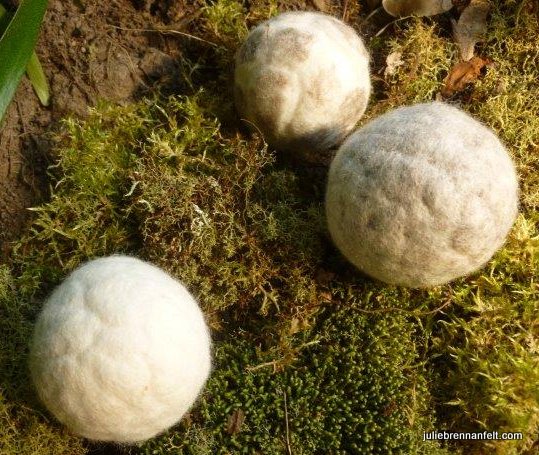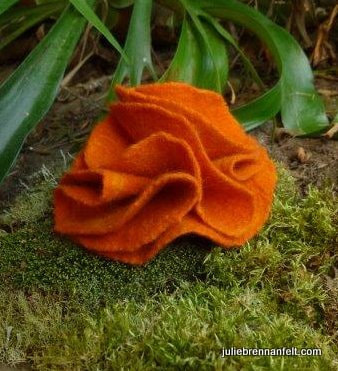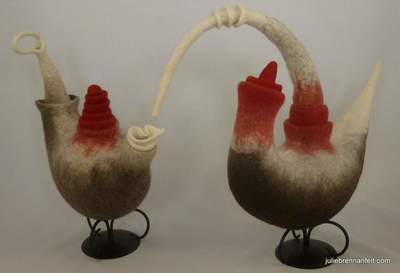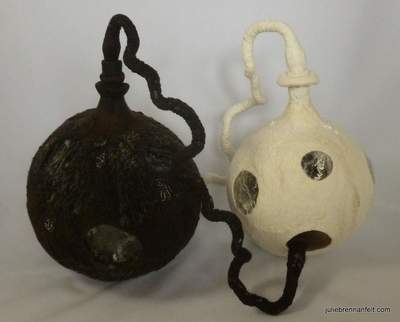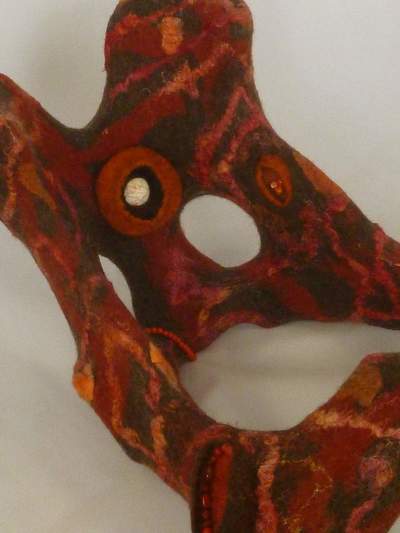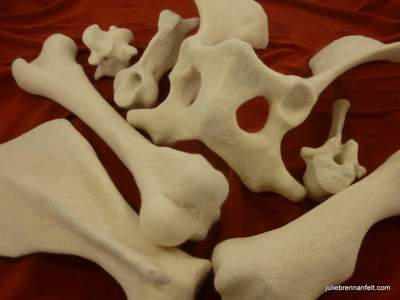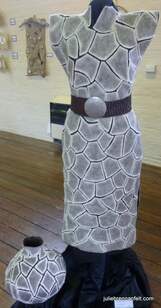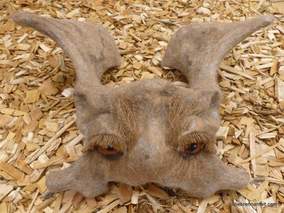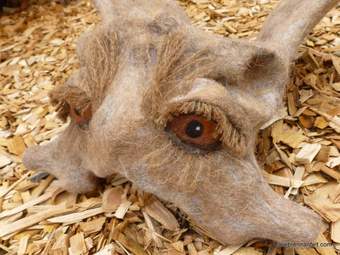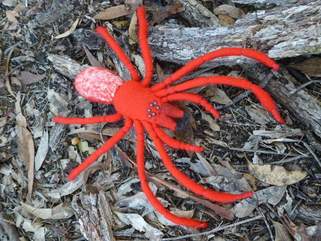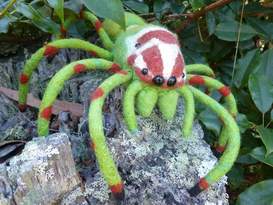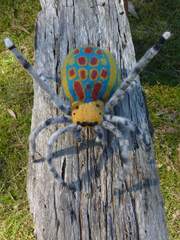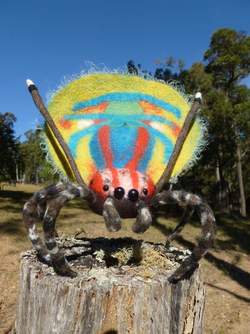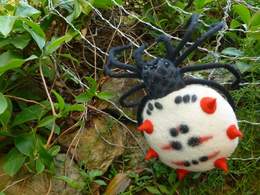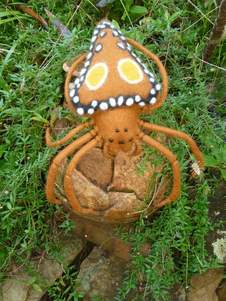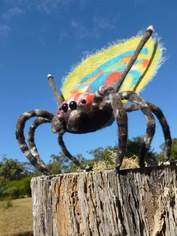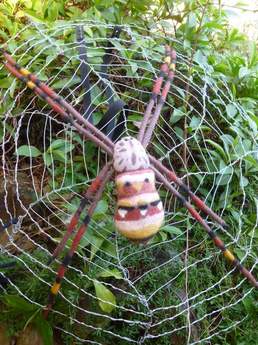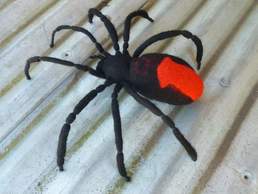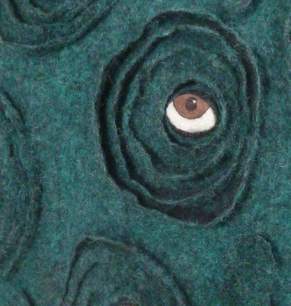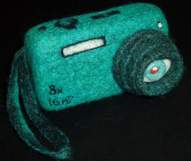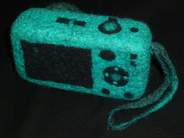The 'Taking a Stand' series
Exhibited: Warped, EFTAG, Moruya, Dec 2018
Taking a Stand in a warped world: requires looking after oneself to stay strong and effective.
The Ghost of the Great Artesian Basin
Exhibited: Subterranean, Timeless Textiles, Newcastle NSW July-Aug 2018 (see review article FELT magazine Issue 20, Dec 2018); Warped, EFTAG, Moruya Dec 2018; Endangered, Spiral Gallery, Bega, Jan-Feb 2019.
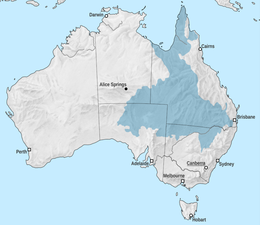
My travels and work in outback Australia over the past 20 years began an enduring love affair with our arid regions. I have become aware of the role of the Great Artesian Basin in sustaining life in a huge area of inland Australia and of the threat that mismanagement poses to all forms of life that rely on it. Formed around 130 million years ago, the Great Artesian Basin underlies 22% of Australia, occupying over 1.7 million square kilometres beneath arid and semi-arid parts of Queensland, NSW, South Australia and Northern Territory. It contains around 65,000 cubic kilometres of water, which is up to 2 million years old.
The Basin plays a vital role in sustaining life in a massive area of inland Australia. However sustainability of the Basin itself is a crucial issue, and mismanagement poses a huge threat to this our most important water resource.
Bores have been used to tap this precious resource, but uncapped bores have been responsible for massive wastage. Even in well-maintained drains up to 95% of the water can be wasted through evaporation and seepage. This has led to significant reductions in pressure and accessibility to the water. In the last 100 years, flows from artesian bores have fallen by about half, the water level in many bores has fallen significantly, and a third have stopped flowing altogether.
The Basin plays a vital role in sustaining life in a massive area of inland Australia. However sustainability of the Basin itself is a crucial issue, and mismanagement poses a huge threat to this our most important water resource.
Bores have been used to tap this precious resource, but uncapped bores have been responsible for massive wastage. Even in well-maintained drains up to 95% of the water can be wasted through evaporation and seepage. This has led to significant reductions in pressure and accessibility to the water. In the last 100 years, flows from artesian bores have fallen by about half, the water level in many bores has fallen significantly, and a third have stopped flowing altogether.
Governments have been slow to act but have begun helping to fund the expensive piping and capping of open bores on pastoral properties. However mining also poses increasing threats to the Basin, and in 2017 the Queensland government granted Adani an unlimited 60 year water licence for its Carmichael mine, in Queensland’s Galilee Basin. Coal seam gas extraction, which accounts for 22% of water extracted in Queensland, requires no licensing.
As water levels and pressures continue to drop, the extent of the massive volume of water remaining is irrelevant as it becomes less and less accessible. My piece explores the scenario where the Basin is in practical terms ‘empty’. The consequences of poor management of the Great Artesian Basin will be disastrous to the delicate ecosystems and to all who currently rely on this precious resource.
As water levels and pressures continue to drop, the extent of the massive volume of water remaining is irrelevant as it becomes less and less accessible. My piece explores the scenario where the Basin is in practical terms ‘empty’. The consequences of poor management of the Great Artesian Basin will be disastrous to the delicate ecosystems and to all who currently rely on this precious resource.
the 'Finding...' series
Exhibited: Lost and Found - EFTAG, Moruya, Dec 2017
'Threatened Species'
Exhibited: Revive, Eurobodalla Nov 2017 (an exhibition using recycled materials) Winner of the People's Choice Award
Featured in FELT magazine, Issue 19 June 2018 - In Focus article
Multicultural - inspired by the beauty and diversity of fungi
Exhibited as a single work at Up the Garden Path - Sculpture exhibition - Eurobodalla Botanic Gardens October 2017
The Space Between - exhibition April 2017
The Fibre of My Being - EFTAG exhibition Dec 2016
Arachnophilia? or Miss Muffet's Nightmare?
|
The Traveller
(exhibited: Feltportation: Contemporary Art in Felt, FCA Gallery, University of Wollongong , Sept 2013) |
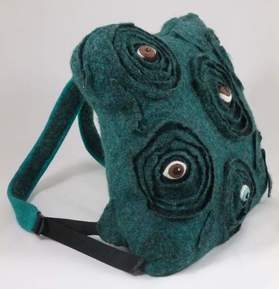
I have been travelling for over 40 years. I was hooked young and travelled ‘seriously’, with a lust for learning. Over time I became aware of numerous things that affected the way I experienced the journey, often creating a sense of insulation.
Language barriers, prejudices and preconceptions, ignorance of culture and traditions, and a reluctance to venture far outside our comfort zones, all contribute layers of insulation. So also can the limited amount of time we are willing (or able) to spend, and the fact that we usually travel in the company of ‘our own kind’.
Language barriers, prejudices and preconceptions, ignorance of culture and traditions, and a reluctance to venture far outside our comfort zones, all contribute layers of insulation. So also can the limited amount of time we are willing (or able) to spend, and the fact that we usually travel in the company of ‘our own kind’.
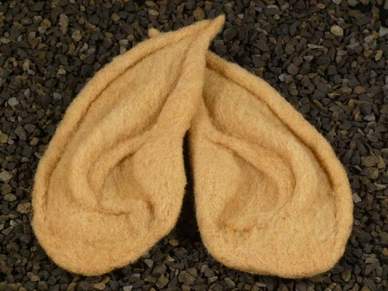
Beam Me Up Scotty
(exhibited: Feltportation: Contemporary Art in Felt,
FCA Gallery, University of Wollongong , Sept 2013)
Think Startrek … teleport… Spock…
(exhibited: Feltportation: Contemporary Art in Felt,
FCA Gallery, University of Wollongong , Sept 2013)
Think Startrek … teleport… Spock…
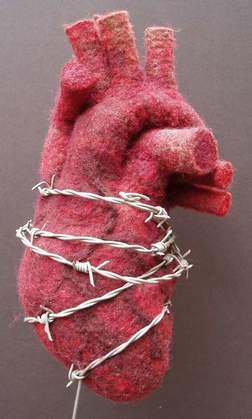
HeartFelt
A heart bound with barbed wire
bleeds with every beat
fears to beat
for every pulse brings pain.
How does healing come?
Can tortured tissue grow
enfold the barbs
embrace the pain
and beat again
with joy?
(Copyright Julie Brennan 2006)
(Exhibited: EFTAG Moruya 2006; Journeys of Grief, Moruya 2008)
A heart bound with barbed wire
bleeds with every beat
fears to beat
for every pulse brings pain.
How does healing come?
Can tortured tissue grow
enfold the barbs
embrace the pain
and beat again
with joy?
(Copyright Julie Brennan 2006)
(Exhibited: EFTAG Moruya 2006; Journeys of Grief, Moruya 2008)
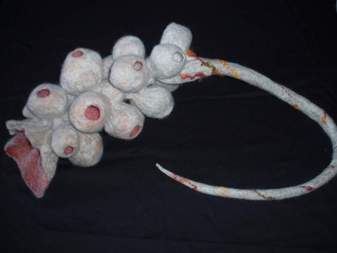
Animal-vegetable hybrid
